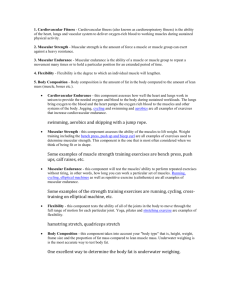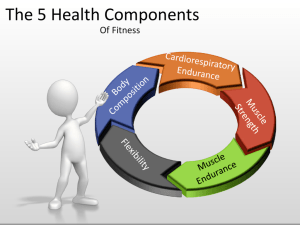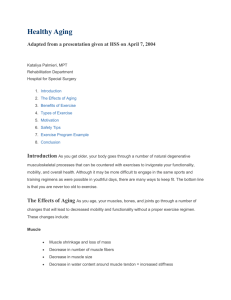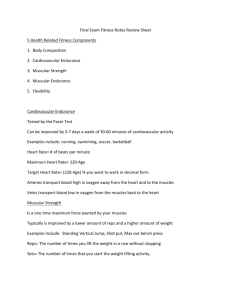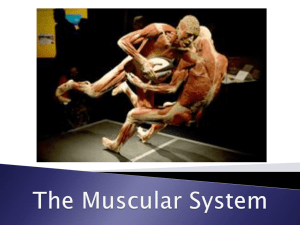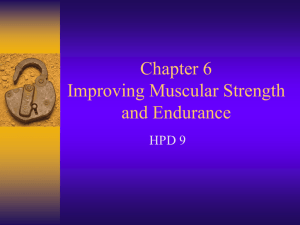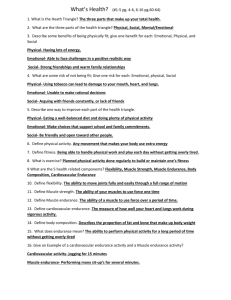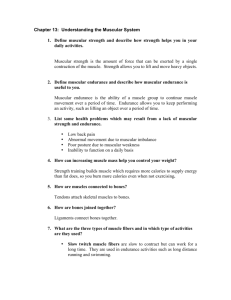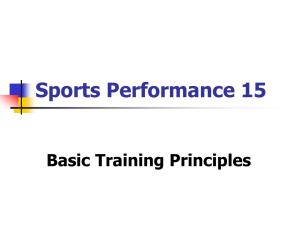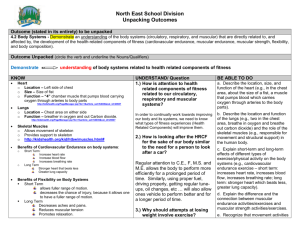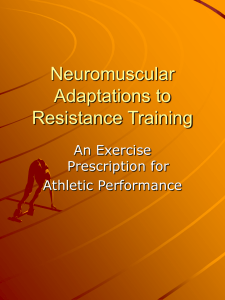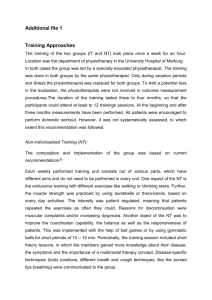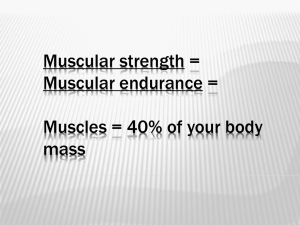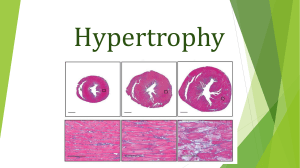Benefits of Resistance Training
advertisement
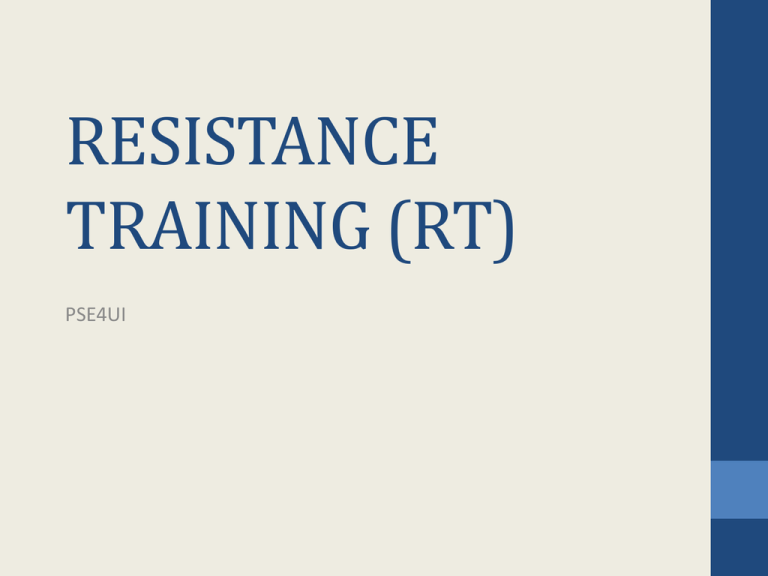
RESISTANCE TRAINING (RT) PSE4UI What is it? • Resistance training can also be called strength training or weight training. • It’s the use of resistance to muscular contraction to build the strength, anaerobic endurance and size of skeletal muscles. • Based on the principle that muscles of the body will work to overcome a resistance force when required to do so! Why do it? • As the body gets introduced to these types of exercise stresses, it adapts in a variety of ways. ** The body usually adapts to these stresses in positive ways, but it will always depend on type, technique, and style of exposure to resistance training. • When you do resistance training repeatedly and consistently in appropriate ways, your body becomes more efficient in multiple aspects… Examples of Training • • • • • • • • • Resistance Training Advanced Exercise Prescription Periodization Training for Power Training for Strength Training for Hypertrophy Exercise Prescription for Weight Loss Speed & Agility Training Youth and Resistance Training Benefits & Effects (p. 66) • Increased muscularity or hypertrophy • Size & efficiency of fast- and slow-twitch fibres • Body composition with fat-free weight gain • Increase in resting metabolic rate • Increased efficiency with motor unit recruitment • Neural unit efficiency & coordination • Strength, power, endurance throughout entire joint • Increased strength of connective and support tissues • Bone density, ligament & tendon strength, joint stability Benefits & Effects (p. 66) • Increased fuel storage capacity of muscle fibers • Muscles become more efficient at storing ATP & glucose storage • Increases in anaerobic threshold • Increased blood supply to muscles • O2 delivery & CO2 removal meaning more efficient CV! • Specific adaptations to exercised muscles • Improvement to local joints, power, speed, & endurance What does this mean for youth? 2009 Position Statement from National Strength and Conditioning Association in the Journal of Strength and Conditioning Research • Relatively safe for youth. • Enhances the muscular strength & power of youth. • Improves the cardiovascular risk profile of youth. • Improves motor skill performance & may contribute to enhanced sports performance of youth. 2009 Position Statement from National Strength and Conditioning Association in the Journal of Strength and Conditioning Research • Increases a young athlete’s resistance to sportsrelated injuries! • Can help improve the psychosocial well-being of youth. • Can help promote and develop exercise habits during childhood and adolescence. A Few Training Principles/Goals • Principle of Overload • Body must be subjected to greater stresses than accustomed to see physiological change • FITT • Frequency, Intensity, Type, Time • Importance of Technique • Muscle activation • Safe stress exposure & avoiding injuries • Primary Resistance Training Goals • Strength & Power • Hypertrophy • Muscular Endurance Growth & Development • Bone formation and growth. • Weight-baring forces on the body often exhibits strengthening of: • Cartilage • Ligaments • Tendons. • Preventative measure against Osteoporosis • Strengthens bones via remodeling, benefiting in joint integrity, stability, & injury prevention Growth & Development • Hormonal differences • Testosterone is seen as a natural male steroid hormone responsible for muscle gain, with males showing higher increases in its production than females. • Females tend to show an increase more estrogen, resulting in body fat deposition, breast development and widening of the hips. • Peak Muscle Development: occurs between 16-20 years in females and 18-25 years in males unless affected by exercise and/or diet. More Benefits & Concerns • Increases in the seemingly obvious: • strength, power, endurance, • anatomical & psychosocial parameters, • improved motor skills & sport performance, • improved body composition in obese and overweight children & adolescents, • improved cardiovascular fitness. More Benefits & Concerns • Reduced injury occurrence in sports and recreational activities • Forces placed on joints can be much greater in sport activity when compared to RT. • Most evidence suggests these injuries occur without supervision and during very heavy overhead movements More Benefits & Concerns • Most concern with RT and youth is injury to the epiphyseal plate • An epiphyseal plate fracture has not occurred when adhering to established guidelines • When RT is taught properly the risk of injury of an epiphyseal fracture is minimal Next Day… • Joints of the human body! • Fibrous • Cartilaginous • Synovial • Feel free to read up on Joints for next class!
